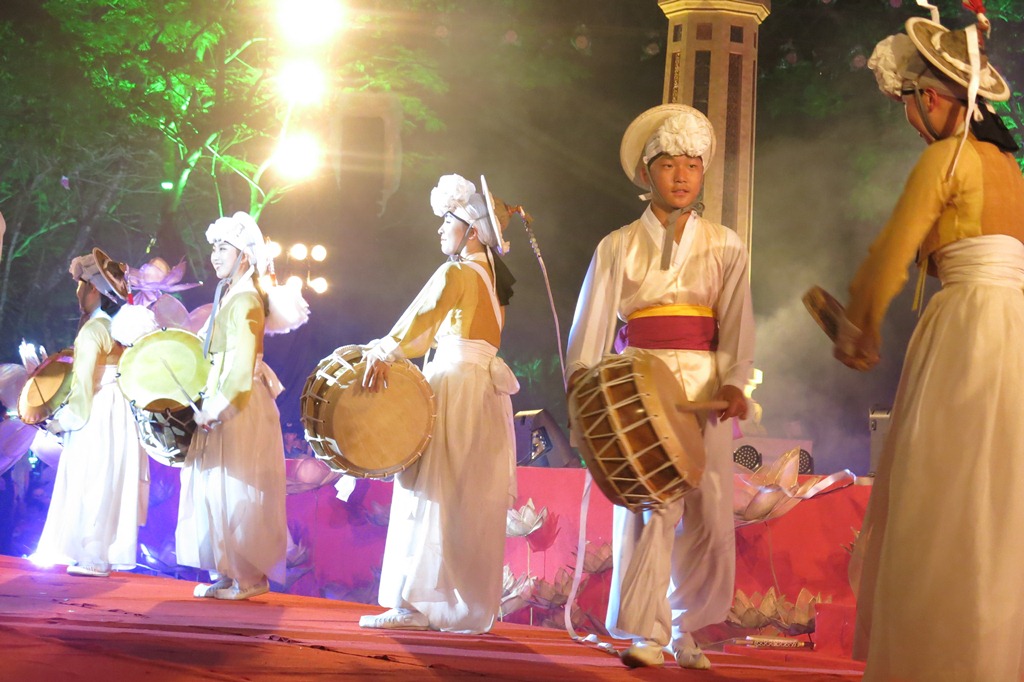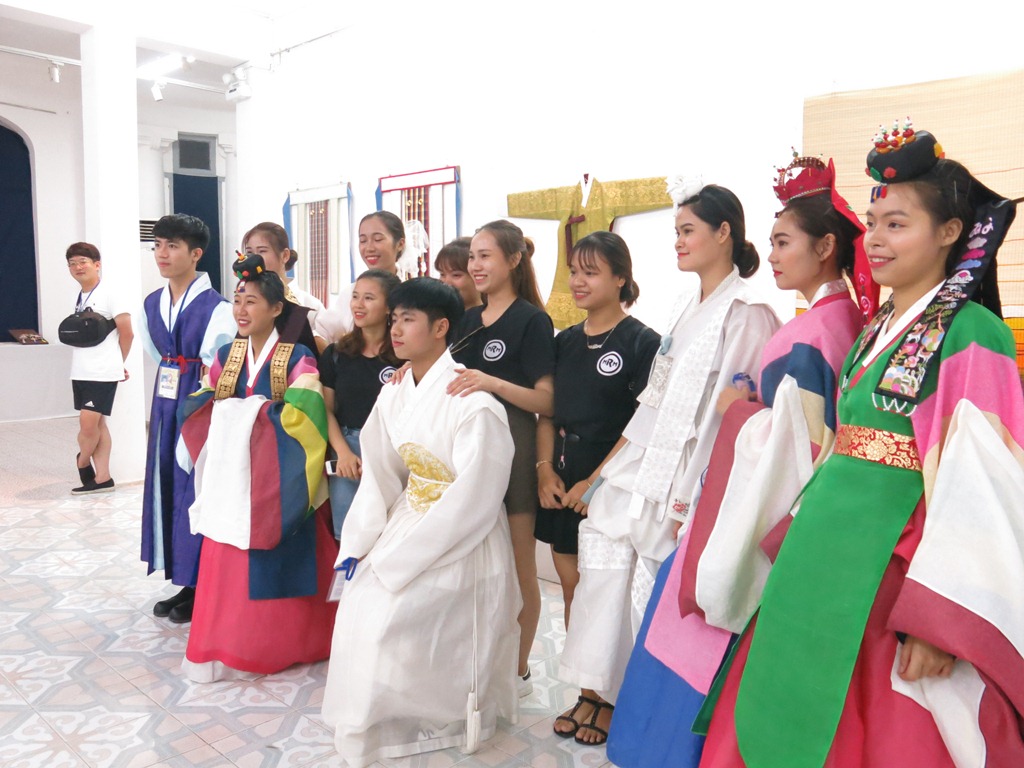
A performance by the Cheongseong Arirang art troupe
Vivid folk songs and dances
At the Quoc Hoc Stele stage, the Korean Traditional Skill Successor Incorporated Association introduces special art performances from the country of kimchi. Vibrant folk songs and dances mixed in sounds of gongs and drums, and colourful Hanboks create an interesting Korean space.
In addition to Pansori – a typical singing style of the Korean traditional music performed by the famous singer Lee Da Eun, the audience also enjoys the Jeongseong Arirang folk music – a UNESCO intangible heritage. In this performance, artists play four types of Korean traditional drums - Samulnori, which are often performed at street festivals.
Korea is well-known for its colorful Hanbok traditional costumes. In this Festival, Korean famous Hanbok designer Kang Young Suk brings 40 different sets that are presented by students of Korean Language and Culture Department, University of Foreign Languages – Hue University.
Hanbok is considered a window into traditional Korean culture. There are different types of Hanbok for people from different walks of life. Hanboks for kings, queens, and mandarins are different from those for ordinary people. Traditional wedding Hanboks are also different from those worn daily. Girls’ Hanboks are not the same as married women’s.

Students of Korean Language and Culture Department, University of Foreign Languages – Hue University wearing Hanboks
Traditional craft experiencing
In the space of the Hue Cultural Museum, the Korean Traditional Skill Successor Incorporated Association introduces 41 traditional handicrafts of 41 artisans, including paintings, fine arts box, Hanbok accessories, wooden flower patterns, handkerchiefs, bags, silver boxes, flower vases, brooches, traditional shoes, etc.
Most of the products are made of such natural materials as wood, leaves, fibers, leather and are handmade by artisans with more than 20 years of professional experience. A number of traditional crafts are hundreds or even thousands of years of age and have maintained their productions since the feudal era.
Artisan Kim Yoonsun brings bags, straps, and sewing tools to the exhibition. These objects are specially made from Hanji paper - a traditional Korean paper. They are Korean typical products that may not be found anywhere else in the world.

Visitors making bracelets
It takes her months to wind pieces of paper like weaving, then to knit them to complete a product. “There are such meticulous products that I have to make in three months. Therefore, this craft requires patience and passion,” said Mrs. Kim Yoonsun.
The Korean Traditional Skill Successor Incorporated Association also provides opportunities for local residents and visitors to experience their traditional handicrafts and to try Korean Hanboks. Everyday, Korean artisans prepare handmade materials for visitors to make their own bracelets, necklaces, key rings and so on.
“I study Korean language and culture because I like to understand more about their culture and country. In addition to the knowledge that I read, this is a chance for me to deeply understand their culture and to have interesting experiences,” shared Tran Thi Thanh Ngoc, a student of the Korean Language and Culture Department.
Story, photos and clip: Minh Hien